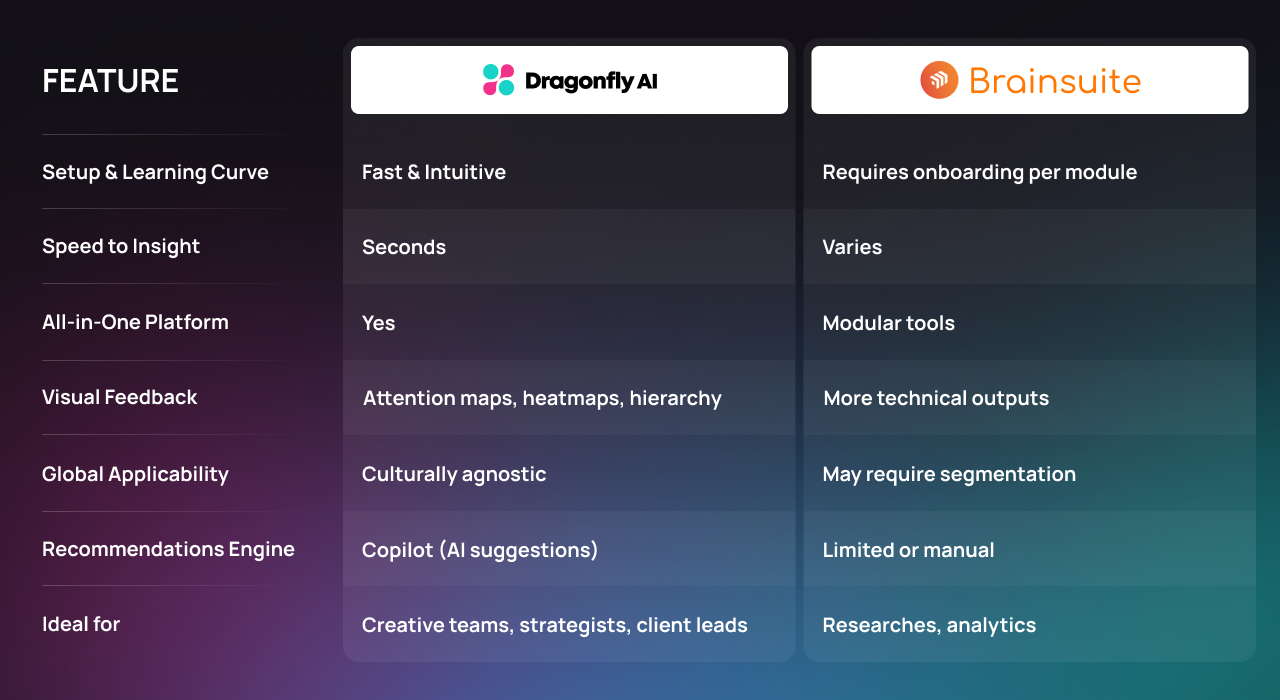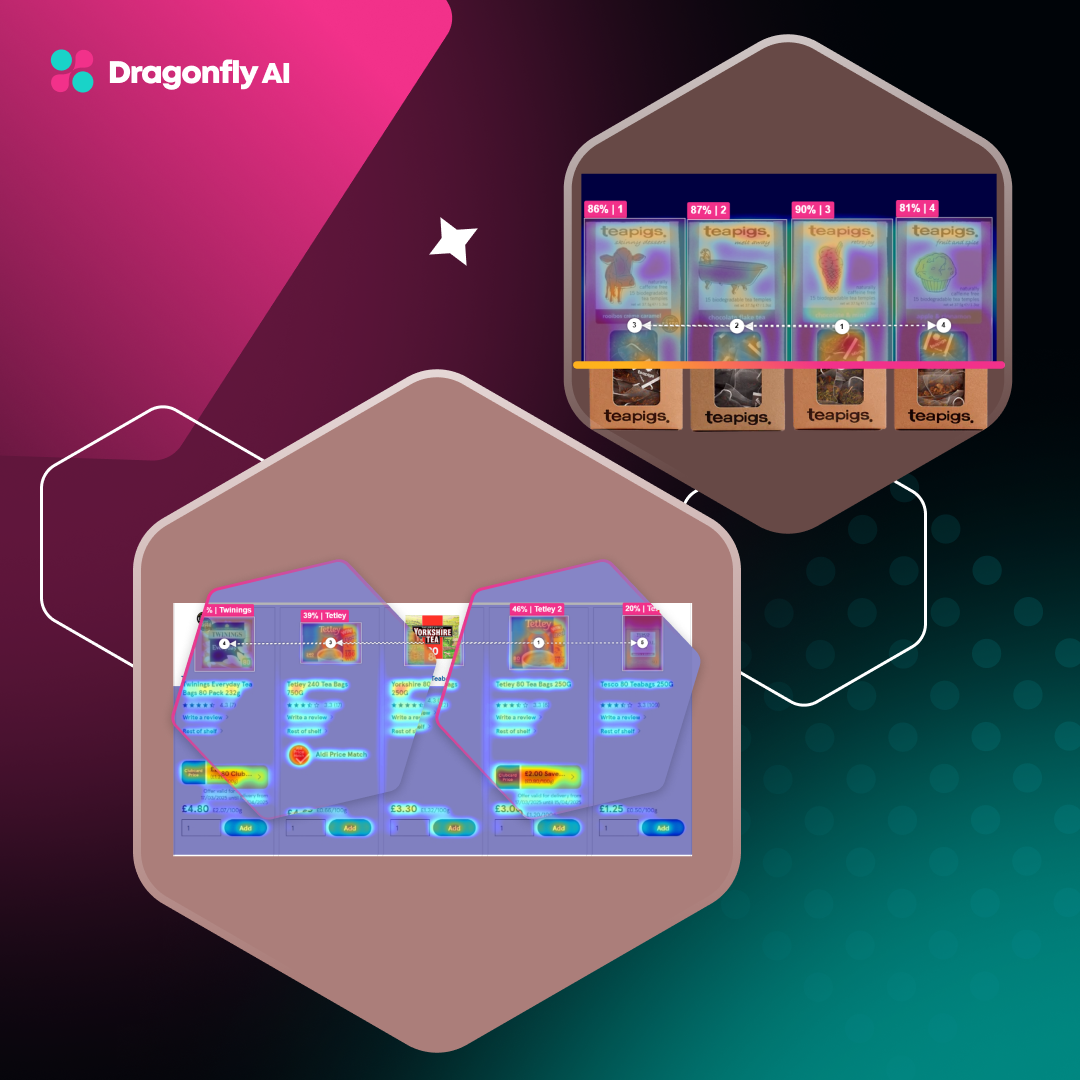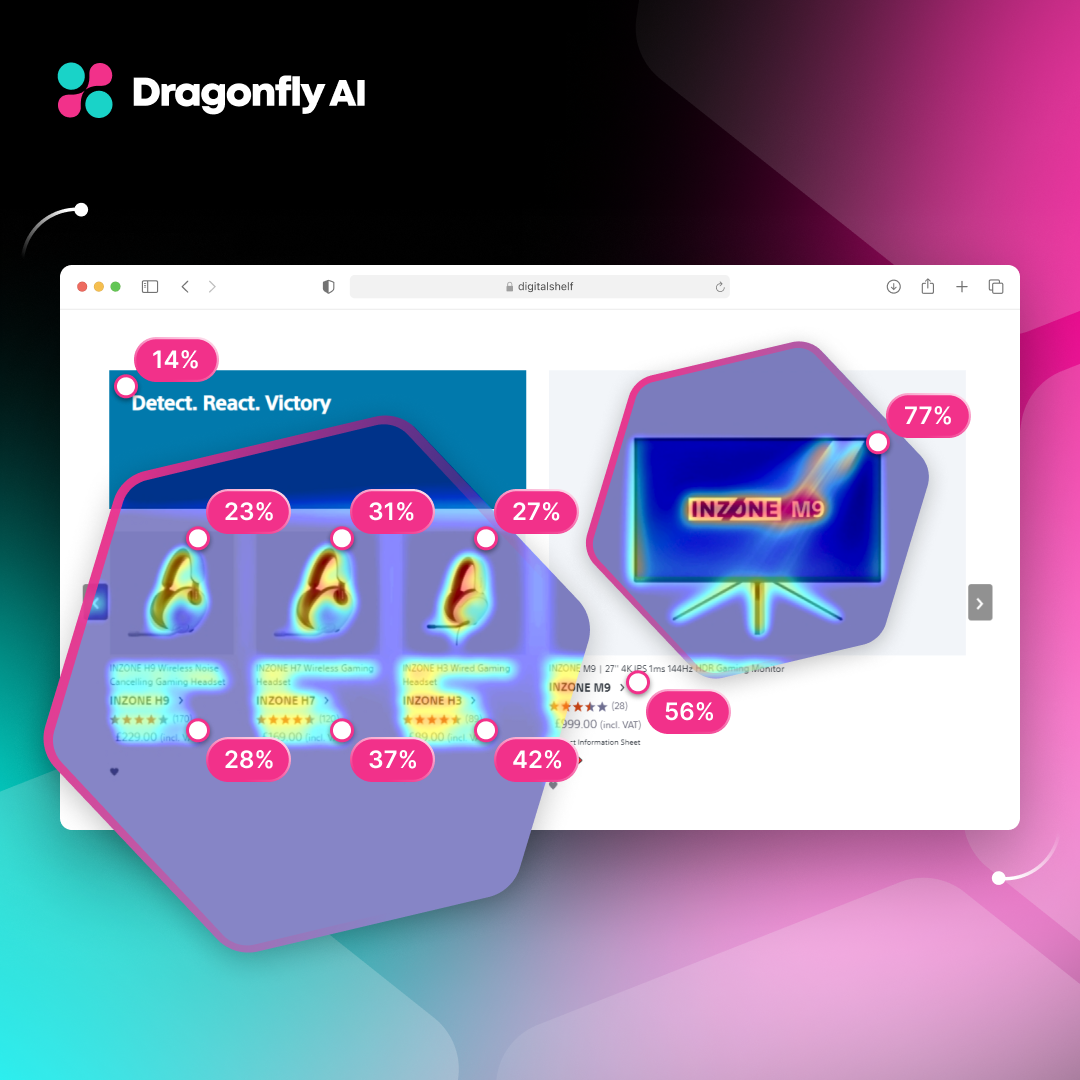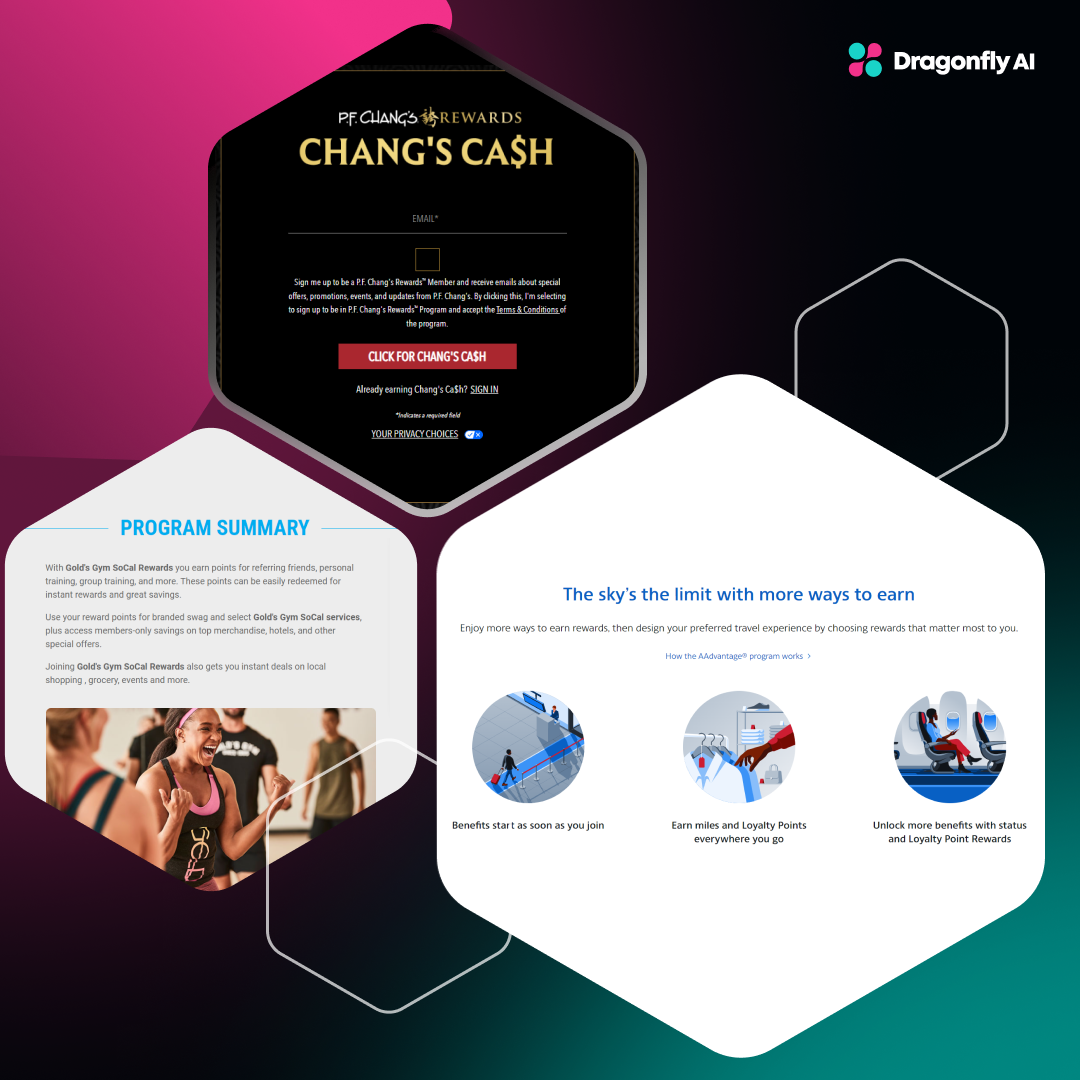The creative process is evolving quickly - and so are consumer expectations.
Timelines are tight, budgets are squeezed, and decisions need to be backed by data (not just instinct), creative and strategy teams need tools that can keep up. That’s why many agencies are exploring AI-powered platforms like Dragonfly AI and BrainSuite to optimize their content across packaging, digital, and retail.
But not all tools are created equal.
Here’s a side-by-side look at how these platforms compare, especially if your team is under pressure to move fast, reduce risk, and deliver confidently.
Speed to Insight
BrainSuite offers a modular system with multiple apps that allow you to test different creative variables but with that comes complexity. Getting a full picture often means jumping between tools or relying on external analysis.
Dragonfly AI delivers instant, all-in-one feedback. Upload your creative, run a test in seconds, and see exactly where attention is going with clear scores for visibility, clarity, and digestibility. You don’t need to wait weeks for results or depend on a research agency to interpret them.
Why it matters: When you’re under time pressure and clients want fast answers, speed isn’t just nice to have its critical.

Actionable, Visual Feedback
BrainSuite provides performance data and predictions, but the feedback can feel fragmented across modules and often requires deeper interpretation or analytical skill.
Dragonfly is built for creative clarity not just testing. Its intuitive visualizations (attention maps, gaze paths, and hierarchy scores) make it easy to identify which elements are working, what’s being missed, and how to improve. With Copilot, you also get AI-powered recommendations to refine your creative instantly.
Why it matters: Your designers, strategists, and client leads can all speak the same language, visual, data-driven, and fast.
Scientifically Backed, Globally Scalable
Both platforms lean on neuroscience, but Dragonfly’s algorithm is trained on over 70,000 global eye-tracking studies and 10 years of academic research in visual cognition. It focuses on System 1 attention the first 3–10 seconds where people make snap decisions, and is culture-agnostic, making it ideal for multinational campaigns.
Why it matters: Whether your content is launching in São Paulo or Stockholm, Dragonfly gives you consistent, reliable insight without needing to segment for every market.
Simplicity Over Fragmentation
BrainSuite uses a toolkit model, separate applications for separate needs. While powerful, this can lead to more decision-making about which tools to license, train on, and integrate.
Dragonfly delivers a unified platform with four core products, Studio, Chrome Extension, App, and Motion, all working together under one license. No jumping between environments, no separate modules to manage.
Why it matters: When creative workflows are already complex, the last thing your team needs is another layer of friction.

Designed for the Way Agencies Actually Work
Many platforms were built for researchers. Dragonfly was built for creatives.
It empowers your team to test anything from packaging and print to digital and video, without slowing them down. Designers can see what’s working before sending to clients. Strategists can validate concepts without long waits on research. Client leads can present decisions backed by data, not just gut feel.
Why it matters: When clients ask, “Why this version?”, your team will have a visual, evidence-based answer. Instantly.
Feature Comparison

Final Thought
If your agency values speed, simplicity, and creative effectiveness, Dragonfly is built for you. It’s not just a testing tool; it’s a way to bring science into your creative process without slowing it down.
Want to see it in action?
Book a demo and predict how your content will perform in the moments that matter most.




